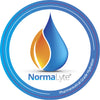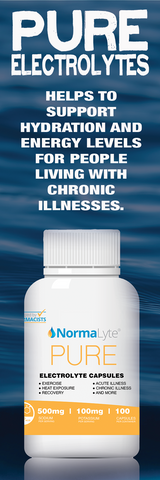From Bedridden to Active: A Journey of Recovery with POTS


Living with Postural Orthostatic Tachycardia Syndrome (POTS) can be an overwhelming challenge. For some, the journey begins with symptoms so severe that they are bedridden, unable to perform even the most basic daily tasks. Yet, with the right approach and tools, it is possible to regain a level of activity and improve your quality of life.
POTS and Exercise Intolerance
POTS is a form of dysautonomia, a condition where the autonomic nervous system does not function properly. It is characterized by an abnormal increase in heart rate when moving from a lying down to a standing position, often accompanied by dizziness, lightheadedness, and fatigue. These symptoms can be so debilitating that patients may find themselves confined to bed for extended periods.
One of the key challenges for POTS patients is exercise intolerance. This condition makes it difficult for individuals to engage in physical activity without experiencing a worsening of symptoms. Exercise intolerance in POTS is thought to be related to several factors, including blood pooling in the lower extremities, reduced blood volume, and autonomic dysfunction. This can create a vicious cycle, where inactivity leads to deconditioning, which in turn exacerbates POTS symptoms.
Breaking the Cycle: Gradual Reconditioning
The road to recovery for someone with POTS often begins with breaking the cycle of deconditioning. This process involves a careful and gradual approach to increasing physical activity, tailored to the individual's specific limitations and capabilities.
Start Slowly
For someone who has been bedridden, the first step is often simply sitting up in bed for longer periods or engaging in passive range-of-motion exercises. These small movements can help the body begin to adjust to changes in position without triggering a significant increase in heart rate.
Recumbent Exercises
As tolerance improves, transitioning to recumbent exercises, such as stationary biking or rowing, can be beneficial. These exercises allow for physical activity without the need to stand, reducing the risk of orthostatic symptoms.
There is a great list of exercises in this blog that can help you with exercises that can be done on the floor without special equipment.
Hydration and Salt Intake
Proper hydration is crucial for managing POTS. Increasing salt intake, under the guidance of a healthcare provider, can help increase blood volume and reduce symptoms. Additionally, the use of oral rehydration solutions like NormaLyte has been clinically proven to help manage POTS symptoms. NormaLyte works by providing the right balance of electrolytes and glucose, helping to maintain hydration and support overall autonomic function.
Progressive Exercise Program
As tolerance to activity improves, a structured exercise program focusing on cardiovascular conditioning and strength training can be gradually introduced. The key is to increase intensity and duration slowly, always paying attention to the body’s signals and avoiding overexertion.
Incorporating Lifestyle Adjustments
Lifestyle adjustments, such as wearing compression garments, elevating the head of the bed, and frequent small meals, can also support the transition from being bedridden to more active.
The Role of NormaLyte in Managing POTS
NormaLyte is an oral rehydration solution (ORS) that has been shown to be beneficial for people with POTS. Unlike typical sports drinks, NormaLyte is formulated based on the World Health Organization’s ORS standards, ensuring an optimal balance of electrolytes and glucose to maximize absorption and hydration.
For POTS patients, maintaining hydration is critical. Dehydration can worsen symptoms, leading to increased dizziness, fatigue, and heart rate irregularities. NormaLyte has been clinically proven to help reduce these symptoms by improving hydration status and supporting the body’s natural balance of electrolytes .
Incorporating NormaLyte into a daily routine can be a simple yet effective way to manage the symptoms of POTS, particularly when combined with other strategies like increased salt intake and gradual reconditioning exercises.
Recovery from POTS Induced Exercise Intolerance
Recovering from a period of being bedridden due to POTS is a challenging but achievable goal. By understanding exercise intolerance and approaching physical activity with caution, individuals with POTS can gradually rebuild their strength and regain a more active lifestyle. The journey requires patience, persistence, and the right tools—like NormaLyte—to manage symptoms and support the body's recovery.Taking small steps today can lead to big improvements tomorrow. With the right approach, those with POTS can move from a place of struggle to one of strength and resilience.









Leave a comment